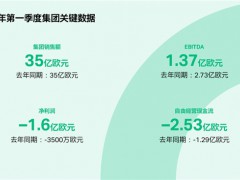據美國鉆井地帶網站6月23日報道,在發給鉆機地帶網站的一份新報告中,惠譽解決方案公司BMI的分析師概述了到2050年油氣行業的幾大趨勢。
分析師們在報告中強調,石油需求減少是大趨勢之一,并補充稱,全球油氣需求將面臨越來越大的壓力,隨著能源轉型加速迫使行業整合,也在促進能源效率的提高和燃料的廣泛轉換。
分析師在報告中指出,迄今為止,需求減少的大部分集中在公路運輸和電力等較容易減少的行業,而且主要集中在成熟市場。
他們補充道,然而,如果要實現《巴黎協定》的目標,全球所有能源部門和市場都需要更深入的脫碳戰略。
BMI分析師在報告中指出,根據他們的數據,成熟市場的石油消費將從2025年開始永久性下降,而新興市場(EM)的峰值將至少滯后10年,考慮到在滿足快速增長消費的同時,要實現能源結構的有意義轉變面臨更大的困難。
分析師在報告中表示,潛在能源結構的差異以及廣泛變化的經濟、人口和政策前景將導致不同地區在隨后的需求下跌速度不同,市場在不同的時間段達到峰值。
他們補充道,在未來幾十年內,非洲、中東和中東歐的需求將最持久,而西歐、北美和亞洲的需求將下降最快。
分析師在報告中表示,不同燃料組合的需求軌跡也會有所不同。
他們表示,隨著燃料效率要求的提高和電動汽車等替代品的普及,道路運輸燃料最容易受到能源轉型的影響,而航空和海洋燃料雖然更難替代,但隨著替代品在未來十年開始進入市場,到2050年燃料需求也將遭受巨大損失。
他們補充道,相比之下,那些為石化和重工業部門服務的燃料將持續更長的時間,因為獲得可行替代品的途徑并不成熟。
石油供應
報告中概述的另一個大趨勢是,隨著全球政策導向和需求改變企業戰略,石油供應將繼續下降。
分析師在報告中表示,鑒于長期需求下降的預期,碳氫化合物長期供應前景疲軟,這將導致石油和天然氣生產商在發展成為綜合能源公司時,對上游行業的投資持續不足。
他們補充道,這種需求下降的新趨勢將導致上游投資減少,以通過限制市場供應的形式來維持油價和利潤。
這一轉變主要原因是上游公司應對包括油氣在內高碳排放行業的減排要求所實施的戰略轉變,以及長期需求前景減弱所推動,這就抑制了更高風險的長期投資,尤其是那些前期開發成本高的投資。
BMI分析師在報告中指出,越來越嚴格的環境法規和政府對化石燃料行業強硬立場將繼續威脅未來的綠地石油和天然氣項目,并加速從碳氫化合物投資轉向低碳。
分析師表示,“從財務角度來看,我們注意到最近的趨勢是,能源公司被征收暴利稅,監管不斷加強,從而抑制了能源公司對未來勘探和生產的大量投入”。并補充道,“我們預計勘探和生產公司將以減少上游和下游項目的增長為代價,繼續提高用于低碳努力(減少排放,碳信用額度抵消)資本支出分配”。
許多生產商的投資不足將導致生產增長放緩,尤其是對于在上游項目組合中面臨日益增加成熟油田份額的生產商來說。
“我們強調,美國多產的頁巖資產基礎將趨于成熟,隨著對新增長的投資放緩,產量將趨于平穩或下降。”
歐佩克的作用
歐佩克的再次崛起是報告中提到的另一個大趨勢。
BMI分析師在報告中表示,從化石燃料向低排放替代品過渡的承諾將見證歐佩克在全球市場中力量的轉變和演變。
隨著需求趨勢下降,供應競爭程度促使人們關注效率、成本和排放強度,石油生產商將變得更加集中。
沙特阿拉伯已經加倍努力成為“最后的生產國”,其目標是到2027年將原油產能從目前的每天1200萬桶提高到每天1300萬桶,并且到2030年將天然氣產量提高50%。
BMI分析師在報告中表示,許多歐佩克和歐佩克+生產國已經擁有低成本的業務,隨之而來的是歐佩克在石油供應中的份額將增長。
分析師們強調,再加上對石油需求下降的預期,雖然這將導致總市場份額的增加,但“蛋糕”將變小。
展望歐佩克未來的政策,BMI分析師指出,歐佩克將推進其戰略從短期價格監管轉向長期政策影響。
分析人士表示,這些政策驅動的行動預計將主要由目前控制大部分石油生產的海灣合作委員會主要國家制定。
他們補充稱,“我們確實預計一些產油國緊張局勢將持續下去,國家利益將超過歐佩克的凝聚力,但這只會發生在非核心產油國身上。因此,該組織的構成可能會繼續發生變化,盡管最終控制權將掌握在目前的頂級生產商手中”。
分析人士還表示,該組織的重點將是更廣泛地轉向氣候適應和減排。
他們稱,這種對氣候變化技術解決方案(碳捕獲、藍氫/氨等)的重視增加了碳排放目標無法實現的風險,因為有限的資金和時間被轉移到石油和天然氣保護工作上。
英國石油公司(bp)展望
早在今年1月,英國石油公司就發布了《bp2023年能源展望》,該公司表示,該展望考慮了最近全球能源供應的中斷以及對全球價格的相關影響,并探討了這將如何影響到2050年的能源轉型。
在其網站上專門的能源展望部分,該公司概述了該報告的幾個“核心理念”。它強調石油需求的下降,并且“隨著車輛效率的提高和道路車輛電氣化的加速,道路運輸的使用量下降”。
盡管如此,未來的15到20年,石油仍將繼續在全球能源系統中發揮重要作用。
概述額度另一個核心理念是,“在風電和太陽能發電日益占主導地位的領導下”,全球電力系統將脫碳。
該公司指出,風電和太陽能發電占據了發電增長的全部或大部分份額并得益于持續的成本競爭力,這些高份額的可變能源整合到電力系統中的能力將不斷增強。風能和太陽能的增長需要大幅加快融資和新產能建設。
概述中還有一個核心理念是,許多國家政府對能源轉型的支持力度有所加大。但脫碳挑戰的規模表明,全球需要更多的支持,包括加快低碳能源和基礎設施的許可和政策批準。
郝芬 譯自 鉆機地帶 網站
原文如下:
Oil and Gas Megatrends to 2050
In a new report sent to Rigzone, analysts at BMI, a Fitch Solutions company, have outlined several megatrends for the oil and gas sector out to 2050.
The waning of oil demand is one of those megatrends, the analysts highlighted in the report, adding that global oil and gas demand will come under increasing pressure, “forcing industry consolidation as the energy transition accelerates, fostering rising energy efficiency and widespread fuel switching”.
“To date, the bulk of demand destruction has been concentrated in easier to abate industries, such as the road transport and power sectors, and has largely accrued in developed markets (DMs),” the analysts stated in the report.
“However, if the Paris Agreement goals are to be met, deeper decarbonization strategies will be required across all sectors and markets globally,” they added.
In the report, the BMI analysts noted that, according to their data, DM oil consumption will fall into permanent decline from 2025, while the emerging market (EM) peak will lag by at least a decade, “given the greater difficulties faced in meaningfully shifting the energy mix, while meeting rapidly growing consumption”.
“Differences in the underlying energy mix and widely varying economic, demographic, and policy outlooks will see the pace of subsequent declines vary across different regions with markets peaking at varying timeframes,” the analysts stated in the report.
“Over a multi-decade horizon, demand will be most durable in Africa, the Middle East and Central and Eastern Europe, while Western Europe and North America and developed Asia will see the fastest declines,” they added.
Demand trajectories will also vary across the fuel basket, the analysts said in the report.
“Road transport fuels are most vulnerable to the energy transition as fuel efficiency mandates rise and alternatives such as EVs ramp up adoption, while aviation and marine fuels, although harder to replace, will also suffer steep losses up to 2050 as alternatives begin to enter the marketplace next decade,” they said.
“In contrast, those fuels serving the petrochemicals and heavy industrial sectors will be longer lasting as the pathways to viable alternatives is least developed,” they added.
Oil Supply
Another megatrend outlined in the report is that oil supply will track lower as global policy and demand shifts corporate strategy.
“The long-term hydrocarbon supply outlook is weak given the expectation for declining demand long term, which will result in persistent under investment in the upstream sector by oil and gas producers as they evolve into integrated energy companies,” the analysts stated in the report.
“This emerging dynamic of lower demand will see upstream investment pared back to preserve oil prices and sustain profits by limiting market supply,” they added.
“This transition is mainly driven by the shift in strategies among upstream companies as they respond to reduction requirements for high carbon emitting industries, including oil and gas, and the weakening long-term demand outlook which disincentivizes more risky, long-term investments, especially those with high upfront development costs,” they continued.
The BMI analysts noted in the report that increasingly stringent environmental regulations and hardening of government positions against the fossil fuel sector will continue to threaten future greenfield oil and gas projects and accelerate the shift away from hydrocarbon investments.
“From a financial perspective, we note the recent trend for the targeting of energy companies with windfall taxes and rising regulations, thereby disincentivizing energy companies from committing heavily to future exploration and production,” the analysts said.
“We expect that exploration and production companies will continue raising capital expenditure allocations towards low carbon efforts (mitigation of emissions, carbon credits offsets) at the cost of growth in upstream and downstream projects,” they added.
“Under-investment among a number of producers will lead to decelerating production growth, especially among producers facing an increasing share of maturing fields in their upstream project portfolio,” they continued.
“We highlight that the U.S. will see some maturing of its prolific shale asset base and will see output plateauing or declining amid slowing investment in new growth,” the analysts went on to state.
The Role of OPEC
The rise of OPEC was another megatrend flagged in the report.
“The commitment to transition away from fossil fuels to low-emission alternatives will see OPEC’s global market power shift and evolve,” the BMI analysts said in the report.
“Oil producers will become more concentrated as demand trends downward and the degree of competition in supply prompts a focus on efficiency, costs, and emissions intensity,” they added.
“Saudi Arabia has doubled down on efforts to become ‘the last producer standing’ with its goal of raising crude production capacity to 13 million barrels per day by 2027, up from its current limit of 12 million barrels per day, as well as increasing natural gas production by 50 percent by 2030,” they continued.
In the report, the BMI analysts stated that many OPEC and OPEC+ producers already possess low-cost operations and added that “it follows that OPEC’s share of oil supply is set to grow”.
“Coupled with our expectations for oil demand to fall, while this would result in a larger share of the market in total, it would be a smaller pie,” the analysts highlighted.
Looking at future policy from the group, the BMI analysts noted that OPEC will evolve its strategy to move away from short-term price regulation to long-term policy impacts.
“These policy driven actions are expected to be largely set by the key Gulf Cooperation Council countries currently controlling the bulk of oil production,” the analysts said.
“We do expect some group tensions to persist and national interests to outweigh OPEC cohesion but this is only expected from the non-core producers,” they added.
“As a result, the group’s make-up is likely to continue to shift although ultimately control will rest with the current top producers,” they continued.
The analysts also stated that the focus of the group will see a wider move towards climate adaptation and emissions mitigation over a wholesale replacement of fossil fuels.
“This emphasis on technical solutions to climate change (carbon capture, blue hydrogen/ammonia, among others) raises the risk that emissions targets will be missed as limited capital and time is diverted to pursue these oil and gas preserving endeavors,” they said.
BP Outlook
Back in January this year, BP published its 2023 Energy Outlook, which the company said considers the recent disruption to global energy supplies and associated impacts on global prices and explores how this could affect the energy transition out to 2050.
In a dedicated energy outlook segment on its website, BP outlines several “core beliefs” of the report. These include the decline of oil demand over the outlook, “driven by falling use in road transport as the efficiency of the vehicle fleet improves and the electrification of road vehicles accelerates”, BP highlights.
Even so, oil continues to play a major role in the global energy system for the next 15-20 years, BP’s site states.
Another core belief is that the global power system decarbonizes, “led by the increasing dominance of wind and solar power”, BP outlines.
“Wind and solar account for all or most of the growth in power generation, aided by continuing cost competitiveness and an increasing ability to integrate high proportions of these variable power sources into power systems,” BP’s site notes.
“The growth in wind and solar requires a significant acceleration in the financing and building of new capacity,” it adds.
Another core belief is that government support for the energy transition has increased in a number of countries, according to BP.
“But the scale of the decarbonization challenge suggests greater support is required globally, including policies to facilitate quicker permitting and approval of low-carbon energy and infrastructure,” BP states on its site.
免責聲明:本網轉載自其它媒體的文章及圖片,目的在于弘揚石化精神,傳遞更多石化信息,宣傳國家石化產業政策,展示國家石化產業形象,參與國際石化產業輿論競爭,提高國際石化產業話語權,并不代表本網贊同其觀點和對其真實性負責,在此我們謹向原作者和原媒體致以崇高敬意。如果您認為本站文章及圖片侵犯了您的版權,請與我們聯系,我們將第一時間刪除。







